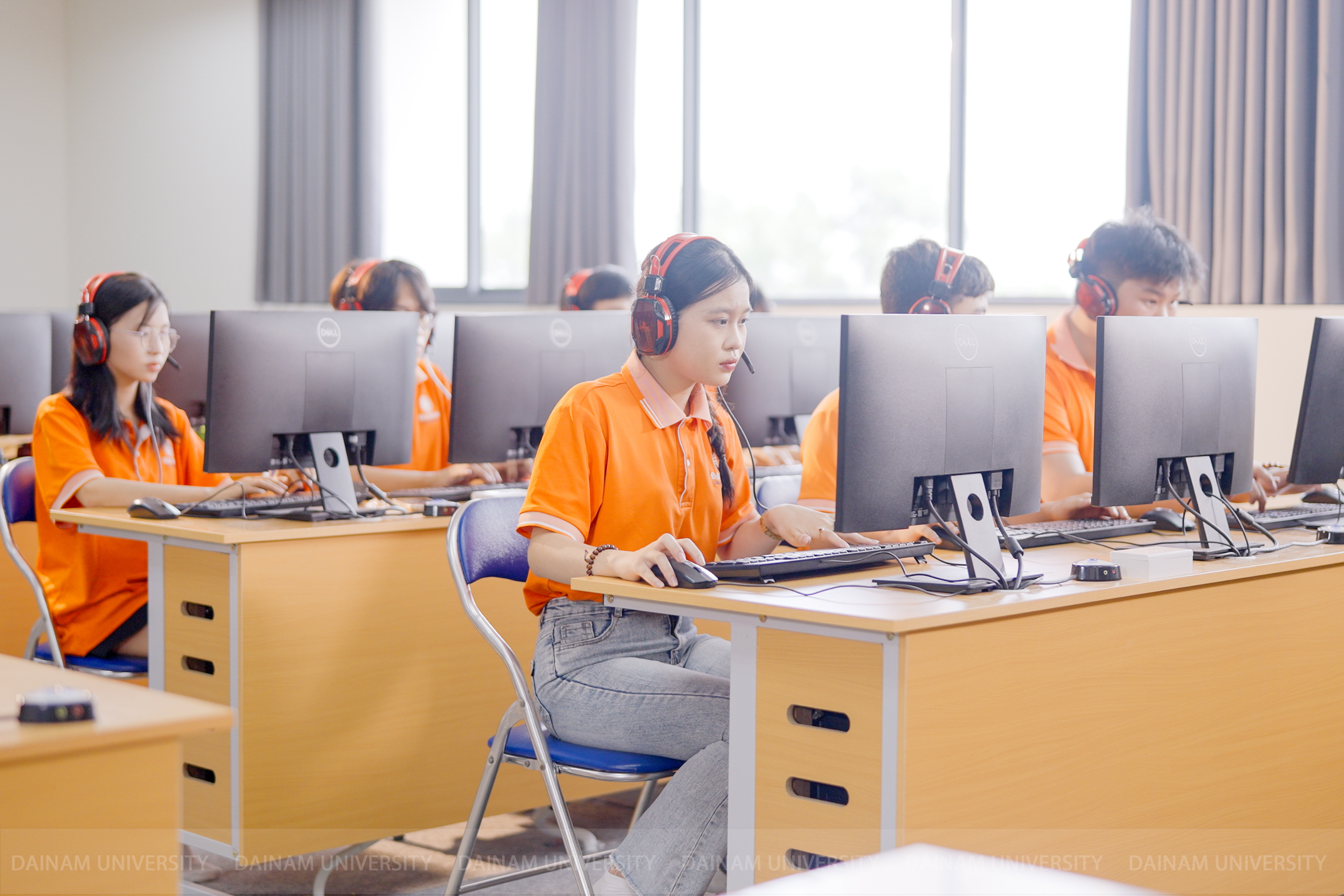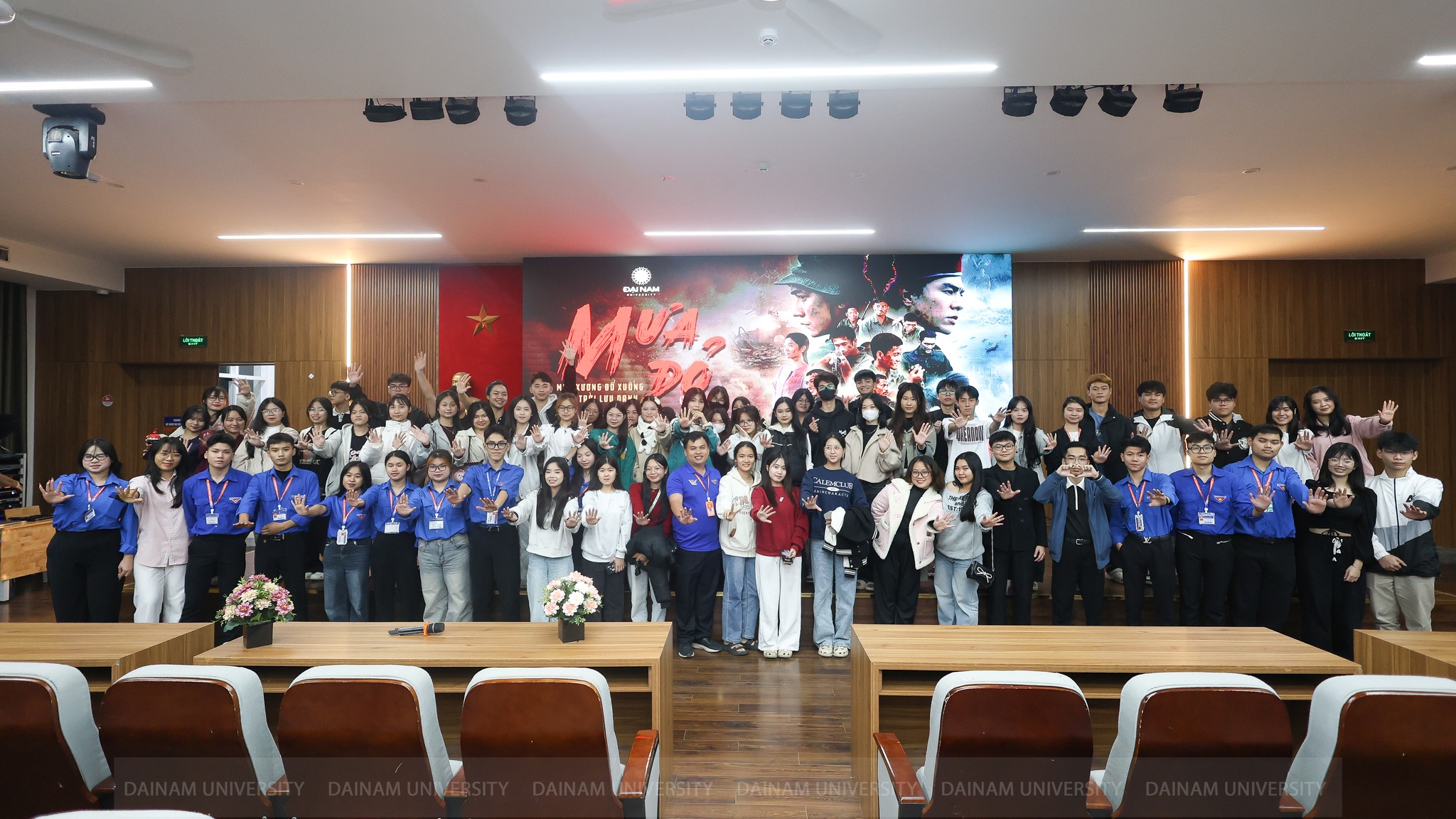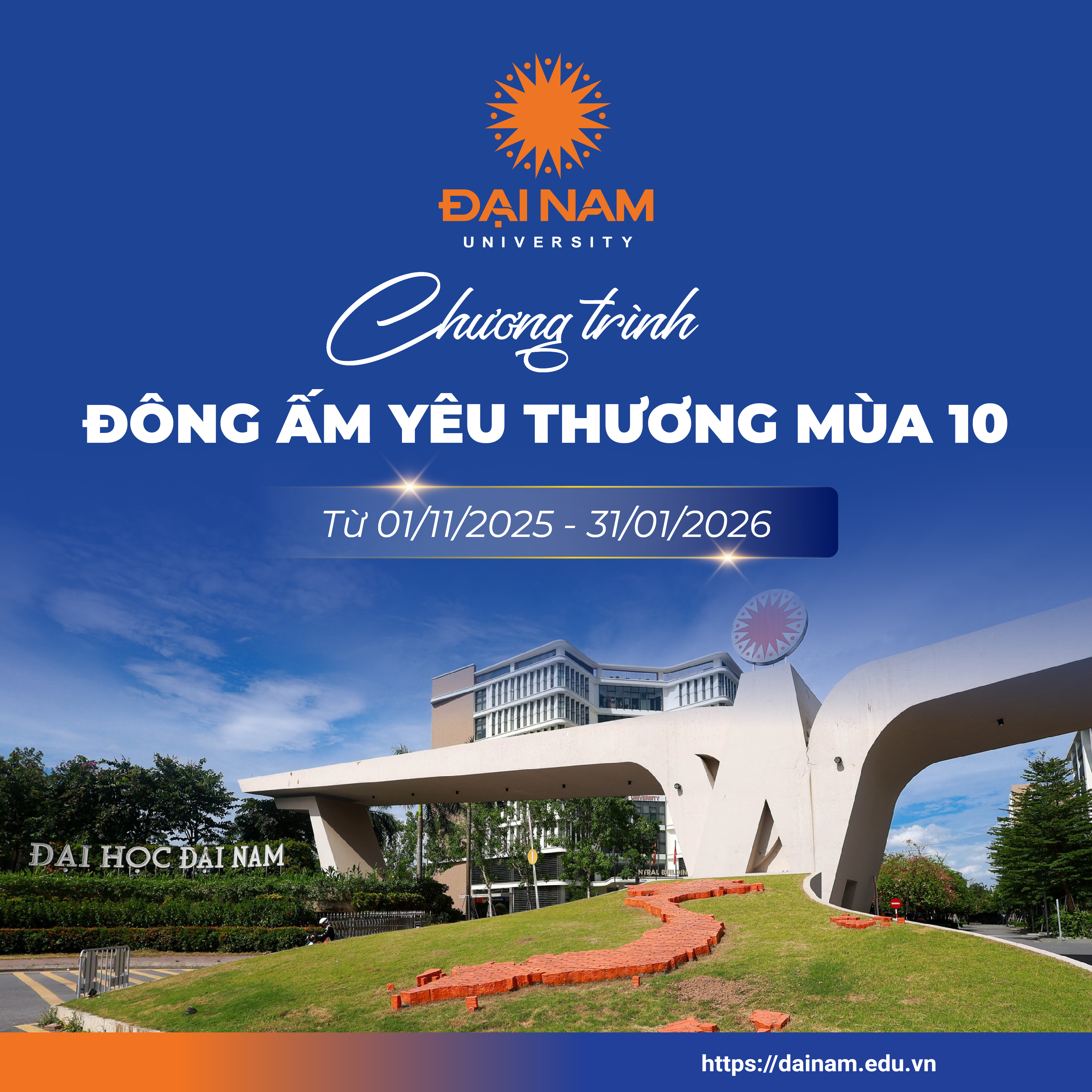Article: Autonomy of personnel and organizational structure for higher education institutions from a legal perspective in the period of international integration

Autonomy of personnel and organizational structure for higher education institutions from a legal perspective in the period of international integration
The autonomy in terms of personnel and organizational structure for higher education institutions from the legal perspective in the period of international integration
Dr. Pham Ngoc Ky
Dr. Do Thi Minh Thu
Dr. Nguyen Thi Hang Nga
______________________
Dai Nam University
Article published in Education and Society Magazine, Special Issue, June 2020. Download article content here .
Summary
In an increasingly developed society with deep and wide international integration, higher education has been directly related to and has a two-way impact on activities and development in all areas of social life. These objective development trends have led to the process of "adjusting" and developing the university autonomy mechanism in the direction of: This has raised new perceptions and requirements on the nature and objective content of the university autonomy mechanism. Of course, the specific application in each country will depend on the conditions, level of development and traditions of each country. The article analyzes and systematizes theoretical issues on the autonomy of educational institutions in terms of personnel from a legal perspective, ...
Keywords : Autonomy, autonomy, human resource management.
Abstract
In an increasingly developed society, with deep and broad international integration, higher education is related and directly affects the two activities of all aspects of social life. These objective development trends have led to the process of "adjusting" and developing the university autonomy in the direction: It is this that has set new perceptions and requirements on the nature and content. objectivity of the university autonomy mechanism. Of course, the specific application in each country will depend on the conditions, level of development and traditions of each country. The article analyzes, systematizes theoretical issues about autonomy of educational institutions on personnel from a legal perspective, ...
Keywords : Autonomy, human rights, human resource management.
1. Problem statement
Public higher education institutions (HEIs) exercise autonomy in terms of organization, apparatus and personnel according to the provisions of the Law on Higher Education (LHE), the Law amending and supplementing a number of articles of the LHE and current regulations on establishment, reorganization and dissolution of public service units; on the number of employees and job positions in public service units; have autonomy in terms of organization, apparatus and personnel to perform professional tasks but are not allowed to increase the number of employees receiving salaries, salary levels (including salaries and allowances) from the salary fund provided by the state budget [ 2].
The autonomy of educational institutions (ECs) in our country has been in place for more than 10 years now, both in terms of law and implementation. However, based on international assessment criteria, it can be seen that the implementation of autonomy in education in our country is only in the first stage and still has many shortcomings. In the coming time, we need to focus on quality, along with what needs to be done so that the autonomy of ECs is truly a management tool to improve educational outcomes. In the current period, innovation in governance in ECs is an important development trend. This is also an important solution to change and improve the quality of education. One of the strong innovations that motivates the development of public service units is the autonomy of personnel and organizational structure.
2. Research content
2.1. Autonomy of university training institutions
Autonomy has been around since Aristotle (384-322 BC) with the idea that universities would thrive if academics were given full autonomy. Simply put, autonomy implies the ability of an individual (such as students, teachers, and scholars) or an organization (such as a university) to act without seeking approval or being controlled from outside [4].
University autonomy from the Western academic perspective, autonomy is a very important concept and is considered a fundamental value of a university as reaffirmed in the Magna Charta Universitatum Declaration in Bologna in 1988. The history of the concept of autonomy dates back to 10 centuries ago, the period when Western universities began to form. With such a history of thousands of years, there have been many different definitions and interpretations related to the issue of university autonomy.
In Vietnam, the concept of autonomy has also been discussed by scholars, typically: According to Phan Van Kha (2007), the autonomy of higher education institutions is the management right of establishments with limited intervention from outside. According to Dao Van Khanh, autonomy does not mean independence, autonomy means freedom in a certain context and position within the framework of legal regulations and subject to social supervision. However, although there are some differences in expression and emphasis, most authors agree on some key points, which are [5]: 1/ Autonomy is an essential condition for a university to exist and fulfill its mission; 2/ Autonomy is a complex concept, with many different aspects. Accordingly, the autonomy of a university must include the following aspects: autonomy in administration, autonomy in training activities (or: academic autonomy), and financial autonomy; 3/ Autonomy is not a condition with two states of either “yes” or “no” but a characteristic that each school can achieve at different levels, from completely non-autonomous to completely autonomous.
From a legal perspective, autonomy is a condition that allows an organization to operate without outside interference. These conditions are determined by the relationship between the State, society and higher education institutions. Autonomy of training institutions (ETIs) is a condition for an EI to be granted the right to manage and make decisions on the aspects of: Organization and management, academics, and finance.
Every social entity (organization, individual) as a legal entity (or natural person) has rights and obligations established by the state and society, expressed through the entity's own goals. When referring to the rights of a subject, it is referring to the legal aspect of subject rights. In general, subject rights are understood as the recognition by law that a subject of law enjoys a certain benefit and all others must respect that enjoyment. It is the ability of the subject recognized by the state through his or her actions to independently exercise subject rights and legal obligations.
There are many different understandings of the concept of university autonomy in the world, depending on the perception of the role of the state in education in general and higher education in particular. According to Downey (2008), the autonomy of universities in a broad sense is the ability to make independent decisions within allowable limits, given by establishing a value system and determining forms of capital, deciding on standards of access to organizations, determining strategic tasks and establishing mechanisms of linkage to other areas in society and determining responsibilities to society [7].
According to the Law on Higher Education 2012, amended and supplemented in 2018: Autonomy is the right of higher education institutions to self-determine goals and choose ways to achieve them; to self-decide and be accountable for professional, academic, organizational, personnel, financial, asset and other activities on the basis of legal regulations and the capacity of higher education institutions.
Although there are different viewpoints, it can be seen that the viewpoints all show: University autonomy is the ability of the university recognized by law to freely manage the school's affairs in accordance with state laws and social and international practices.
Thus, the autonomy of higher education institutions is the ability of higher education institutions to act proactively and legally in determining goals and choosing ways to achieve them, to self-decide and be accountable for professional, academic, financial, organizational, management and other activities in accordance with state laws, social and international practices and the capacity of higher education institutions. CSGDĐH.
2.2. Models of autonomous mechanisms
The above concepts and notions may contain different connotations, but they all have two things in common: the relationship between the state and the university and the level - conditions - ability of the university to operate autonomously to achieve its mission and goals. Considering the legal relationship between the state and the university, the World Bank (2008) generalized the autonomy mechanism of universities in the world according to the following four models:
1. State management model - complete control - "state control" (like in Latin American countries, Malaysia in the past and some other countries).
2. Semi-autonomous model (like in France and New Zealand…).
3. Semi-independent model (like in Singapore and some other countries).
4. Independent model (like in the US, UK, Australia…).
The degree of autonomy of a public university depends on the legal status it is established in. Fielden (2008) points out a spectrum of positions ranging from strict state control of the universities to full autonomy and independence that the universities have, giving four representative models from control to autonomy (see table below). At the same time, it is also emphasized that within the state control model there is still some autonomy because a central ministry cannot control everything, while within the independent model the Ministry of Education is still legally responsible for many aspects [8, p. 9].
Organizational management method | The status of public universities | For example |
State control | It could be an agency of the Ministry of Education, or a state-owned corporation. | Malaysia |
Semi-autonomous | May be an agency of the Ministry of Education, a state-owned corporation or a statutory body | New Zealand, France |
Semi-independent | A statutory body, charitable or non-profit corporation under the control of the Department of Education | Singapore |
Independence | Statutory body, charitable or non-profit corporation without state involvement and control, linked to national strategies and only concerned with public funding | Australia, UK |
Table 1: Four models from control to autonomy
Source: Fielden 2008 [8, p. 81]
2.3. Content on the autonomy of higher education institutions
According to Anderson and Johnson, the concept of autonomy includes the following 7 components or areas of activity: According to Anderson & Johnson (1998), the elements of university autonomy include: 1/ Staff: recruitment, promotion, qualifications of teaching staff and senior administrative staff; 2/ Students: admission, learning process, discipline; 3/ Training programs and teaching activities: methods, exams/tests, content, textbooks; 4/ Professional standards: degree standards, quality assessment standards and accreditation; 5/ Research and publication: training, priority topics, freedom to publish; 6/ Administration: councils, departments, Student Association; 7/ Administration and finance: budget, operating costs, equipment and materials costs, seasonal work, extra-budgetary funds, responsibility regulations [1].
The above mentioned administrative areas form 3 different groups: group 1 (areas 1 and 2) is related to the management of teachers and students, the two entities directly involved in the main activities of a higher education institution, which are teaching, learning and research; group 2 (areas 3, 4, 5) is related to the management of the activities of the entities in group 1; and group 3 (areas 6, 7) is mainly related to the activities of the management, operation and service departments.
When comparing within a country, it can be seen that the level of autonomy in these areas is often not the same. In countries with high autonomy, government control only exists in areas 4 (professional standards) and 7 (administration and finance). In countries with average autonomy, government control can increase in areas 3 (curriculum and teaching activities) and 6 (management). Meanwhile, in countries with low autonomy, the government has the right to intervene in all areas of CSĐTSGD school activities. From the above analysis, it can be summarized that the elements of university autonomy include:
Autonomy in organization and management : It is the freedom of higher education institutions in arranging and organizing internal resources of the school for the purpose of development. Autonomy in organization and management is considered as the initiative in the way of managing different resources, universities are free to decide and take the initiative in building organizational structures; establishing, restructuring or dissolving affiliated units; carrying out recruitment, appointment, and remuneration, and at the same time building school development strategies according to their own vision and orientation.
Autonomy in training : It is the initiative of the training and scientific research institutes in the field of training and scientific research. Accordingly, the training institutes are free to decide on related contents such as: enrollment; training majors and specialties; training programs, textbooks and learning materials; teaching methods; tools and means of service; academic standards and quality assurance; forms of implementation as well as methods of association in realizing scientific and technological goals and international cooperation.
Financial autonomy: That is, independently managing and allocating one's own funds, specifically deciding on: The duration of a public funding round; the type of public funding; Borrowing capital and maintaining surpluses; Operating facilities; Tuition fees for domestic and foreign students, graduate students, and researchers.
3. Autonomy of personnel and organizational structure of higher education institutions from a legal perspective
3.1. Autonomy in organization and management
Autonomy in organization and management is the freedom of educational institutions in establishing the structure, apparatus, arranging and organizing the internal resources of the school for the purpose of development. It is the initiative in the ways of managing the internal resources of the school to achieve development goals.
Educational institutions need to be autonomous and proactive in building organizational structures, separating and establishing affiliated units, recruiting, appointing, and rewarding talents, while also building a development strategy with a clear vision and direction. Criteria for assessing the level of autonomy in organization and management include: - Organizational model and capacity of the management system; - Human resource management and development system.
Autonomy in organization and management is considered as the initiative in the way of managing different resources, educational institutions are free to decide and take the initiative in building organizational structures; establishing, restructuring or dissolving affiliated units; carrying out recruitment, appointment, and treatment, and at the same time building school development strategies according to their own vision and orientation,...
- In which, the right to autonomy in personnel is shown: + The educational institution has the right to decide on the project to build job positions and staff structure; + The educational institution has the right to decide on recruitment, appointment, management of civil servants and employees; hire labor contracts to perform tasks; decide on the number of employees...
3.2. Autonomy in personnel and organizational structure from a legal perspective
The issue of autonomy of educational and training institutions in general, especially of higher education institutions, has been mentioned in official documents of the Party and the State for more than 10 years, such as in Resolution 14/2005 of the Government in 2005 on Fundamental and Comprehensive Innovation of Higher Education in Vietnam, which clearly stated: “On the basis of innovation in thinking and management mechanisms of higher education, reasonably and effectively combine the clear division of functions and tasks of State management and the assurance of autonomy, enhancing social responsibility and transparency of higher education institutions. Promoting the positivity and proactiveness of higher education institutions in the innovation process, with the core being the team of teachers, managers and the active response and participation of the whole society”; “Transforming public higher education institutions to operate under an autonomous mechanism, with full legal entity, having the right to decide and be responsible for training, research, organization, personnel and finance”; “Perfecting the policy of developing higher education towards ensuring the autonomy and social responsibility of higher education institutions, the management of the State and the role of supervision and evaluation of society towards higher education”. In recent years, in the documents of the 11th and 12th Congresses, the Law on Higher Education (2013, 2018) and a number of sub-law documents of the Government have emphasized and more clearly defined the contents related to the issue of autonomy mechanism of universities.
According to the provisions of the Law on Higher Education 2018, the focus is on amending the regulations on the University Council to have real power in deciding on the organizational structure; deciding on personnel, standards for principals, vice principals, and standards for teachers according to the provisions of law. The principal of a public university is recognized by a competent management agency based on the proposal of the University Council; the principal of a private university is decided by the Board of Directors.
According to Decree No. 16/2015/ND-CP dated February 14, 2015 of the Prime Minister regulating the autonomy mechanism of public service units (PSUs), PSUs are allowed to decide to establish, reorganize, and dissolve units that are not part of the organizational structure of constituent units according to the decision of the competent authority, when meeting the criteria, conditions, and standards prescribed by law; develop a plan to rearrange constituent units and submit it to the competent authority for decision. Particularly, PSUs that self-insure a part of their regular expenses and PSUs whose regular expenses are guaranteed by the state budget: Develop a plan to arrange and perfect the organizational structure of the unit and submit it to the competent authority for decision. As for personnel autonomy, PSUs build job positions and staff structure according to professional titles and submit it to the competent authority for approval; recruit, use, appoint, dismiss, reward, discipline and manage civil servants and employees according to the provisions of law; hire labor contracts to perform tasks. The public service unit self-insures regular expenses, investment expenses and the public service unit self-insures regular expenses to decide on the number of employees; the public service unit self-insures a part of regular expenses to propose the number of employees of the unit to submit to the competent authority for decision; the public service unit whose regular expenses are guaranteed by the state budget to propose the number of employees based on the average staffing level of the previous 5 years and not higher than the current staffing level of the unit, to submit to the competent authority for decision (for newly established public service units with an operating period of less than 5 years, the average of the entire operating period is calculated). In case the public service provider has not yet established job positions and staff structure according to professional titles, the number of employees is determined based on the average staffing of previous years according to the guidance of the Ministry of Home Affairs.
Decree No. 16/2015/ND-CP is considered to have many new and more positive points compared to Decree No. 43/2006/ND-CP, however, public higher education institutions still do not have much autonomy because they still have to depend heavily on administrative decisions of the governing authority. To continue to resolve the above difficulties, Resolution 77/2014/NQ-CP has many new points to create favorable mechanisms for public higher education institutions to best exercise autonomy in the field of personnel organization. According to Resolution 77/NQ-CP, public higher education institutions are allowed to establish, reorganize, and define the functions and tasks of their affiliated departments, and to sign contracts with personnel, including foreigners, to perform management and teaching tasks.
- Autonomy in personnel and organizational structure is operated at current educational institutions.
According to current legal regulations, including promulgating and organizing the implementation of internal regulations on organizational structure, labor structure, list, standards, and regimes of each job position; recruiting, using and dismissing teachers, civil servants and other employees, deciding on administrative and management personnel in higher education institutions in accordance with legal regulations. Thus, higher education institutions have the right to: + Promulgate regulations on organization and operation of higher education institutions in accordance with the prescribed functions, tasks, powers, and organizational structure; + Regulate the functions, tasks, regulations on organization and operation of units under and directly under higher education institutions; + Decide and organize the implementation of planning and development plans for teachers and managers; develop and approve projects on job positions, number of employees, labor structure according to professional titles and decide on the number of employees according to detailed regulations of higher education institutions; + Decide on recruitment, signing of labor contracts, use and management, appointment, dismissal, salary increase, reward, discipline of employees according to the provisions of law; + Decide on the regime and policies to attract, use, train, foster, and treat highly qualified teachers, scientists, managers, and employees; regulate the income level of employees according to the quality and efficiency of work products; + Decide on sending teachers, scientists, and employees to attend seminars, conferences, research, surveys, and study abroad according to decentralization; Decide on inviting prestigious scientists, managers, and experts at home and abroad to teach, conduct scientific research, manage expertise, manage projects, training programs, and scientific and technological activities.
Thus, Decree 16/2015/ND-CP stipulates that all public service providers must develop job positions and staff structures for approval by competent authorities. Therefore, Decree 141/2016/ND-CP has provided specific mechanisms for personnel autonomy.
Accordingly, the issue of determining job positions and staff structure is as follows: Economic and other public service units that self-insure regular expenses and investment expenses and economic and other public service units that self-insure regular expenses are allowed to decide on job positions and staff structure according to professional titles in accordance with assigned functions and tasks.
Economic and other public service units that partially self-insure regular expenses and economic and other public service units whose regular expenses are guaranteed by the state budget shall develop job positions and staff structure according to professional titles and submit them to competent authorities for approval.
Economic and other public service units that self-insure regular and investment expenses and economic and other public service units that self-insure regular expenses decide on the number of employees; Partially self-insure regular expenses propose the number of employees of the unit to submit to the competent authority for decision; Economic and other public service units whose regular expenses are guaranteed by the State budget propose the number of employees based on the average staffing level of the previous 5 years and not higher than the current staffing level of the unit, and submit to the competent authority for decision.
In addition, economic and other public service units are allowed to decide to establish, reorganize, and dissolve units that are not part of the organizational structure of constituent units according to the decision of competent authorities, when meeting the conditions prescribed by law; develop plans to reorganize constituent units and submit them to competent authorities for decision.
For economic and other public service units that partially self-insure regular expenses and economic and other public service units whose regular expenses are guaranteed by the State: Develop a plan to arrange and perfect the organizational structure of the unit and submit it to the competent authority for decision.
Every year, the unit develops an operational plan in accordance with the unit's functions, tasks, and capabilities in accordance with the provisions of law. The unit decides on measures to implement tasks according to the unit's plan and the plan assigned by the superior agency, ensuring quality and progress; participates in bidding for the provision of public career services in accordance with the unit's professional fields assigned by competent authorities; forms joint ventures and associations with organizations and individuals to provide services to meet social needs in accordance with the provisions of law.
4. Conclusion
To carry out the heavy task of higher education in response to the country's requirements, integration and globalization, enhancing autonomy for training institutions in education is one of the major policies of the Vietnamese Government. In the world, university autonomy is a fundamental factor in university governance. Innovation in the management mechanism towards granting autonomy and self-responsibility to public higher education units is completely correct, in line with the open-door integration policy and path of our Party and State . In particular, innovation in governance in educational institutions is an important development trend and changes and improves the quality of education. Autonomy is a system of solutions with a tight structure aimed at improving the educational environment to enhance the quality of teaching and learning. It is expected that autonomy will create a foundation for developing these factors rather than a system. interdependence with all the contradictory conditions that reduce the quality of higher education. Therefore, greater institutional autonomy is a key factor in the success of higher and postgraduate education reforms, especially those aimed at diversifying and using resources effectively.
_______________
References
1. Ministry of Education and Training (2014), Summary report on the implementation of Resolution 77/2014/NQ-CP dated October 24, 2014 of the Government on piloting innovation
2. Government, Decree No. 99/2019/ND-CP dated December 31, 2019 on "Detailed regulations and instructions for the implementation of a number of articles of the Law amending and supplementing a number of articles of the Law on Higher Education" , Hanoi, 2019.
3. Pham Phu (2006), University autonomy and social responsibility, Tia Sang Magazine, July 2006 .
4. Phan Huy Hung (2009), State management towards ensuring autonomy and self-responsibility of universities in Vietnam, PhD thesis.
5. Vu Thi Cam Tu , Some opinions on autonomy and self-responsibility of colleges and universities in Vietnam , State Organization Journal, No. 9/2011, pp. 43-44.
6. Berdahl, R. Public Universities and State Government: Is the Tension Benign? In European Center for Higher Education (Ed.) , Academic Freedom and University Autonomy. Bucharest: UNESCO, 1993.
7. Downey, “Accountability versus Autonomy”, University Quality Systems Council Conference , Canada, December 13, 2008.
8. Fielden J., Global trends in university governance , World Bank, Washington DC, 2008.
Register for admission consultation 2025
scholarships and tuition support worth up to 55 billion VND

scholarships and tuition support worth up to 55 billion VND






